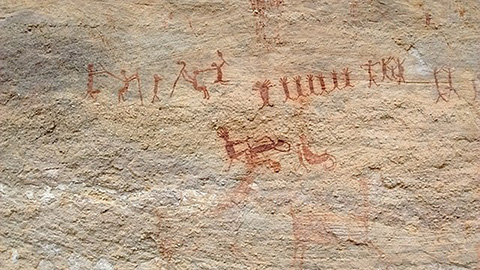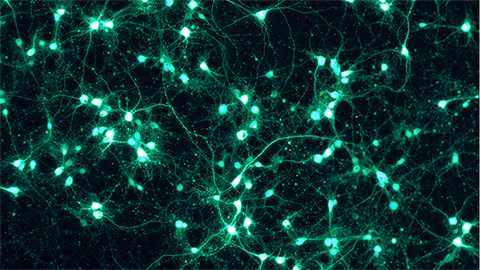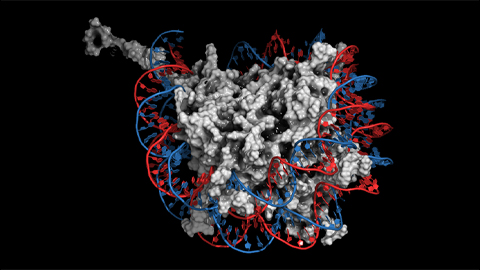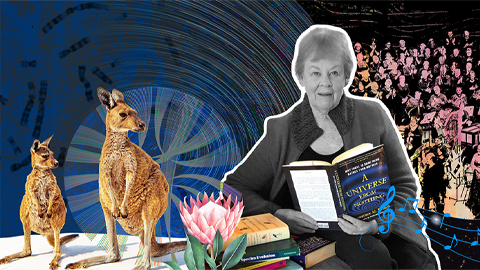
NIH project homes in on COVID racial disparities
While the disproportionate impact of COVID-19 on Black and Hispanic Americans is no secret, federal officials have launched studies of the disparity that they hope will better prepare the country for the next great epidemic.
The National Institutes of Health began the ambitious “All of Us” research project in 2018 with the goal of enrolling at least a million people in the world’s most diverse health database. Officials saw it as an antidote to medical research that traditionally has skewed heavily white, well-off and male.
Amid a wavering federal response that has allowed staggering levels of disease to sweep the country, the NIH program is a potential bright spot. About 350,000 people have consented to be part of the project, and more than 270,000 of them have shared their electronic health records and submitted blood or DNA samples. Of the latter, more than half are members of minority groups, and 81% are from traditionally underrepresented groups in terms of socioeconomic background, sexual identity or other categories, according to NIH.
NIH researchers are trying to get a better sense of how socioeconomic factors like income, family structure, diet and access to health care affect COVID infections and outcomes. The hope is to come up with insights that will better prepare the country, especially its Black and Hispanic communities, for the next pandemic.
The participants’ blood and DNA samples, and access to their electronic health records, offer researchers a trove of data about the pandemic’s effect on minorities. As part of the program, NIH has promised to return research results to all participants in plain language.
In a sense, “All of Us was designed for COVID-19,” said Hugo Campos, a program participant and ambassador who lives in Oakland, California. “If we can’t deliver value to participants now, we might as well just forget it.”
The NIH constructed All of Us with the expectation “that something like COVID-19 could come,” said Josh Denny, the project’s chief executive officer.
All of Us, started by NIH Director Francis Collins under President Barack Obama, aims to answer questions that will allow health care to be tailored to individuals based on their unique genetics, environmental exposures, socioeconomics and other determinants of health. Now, scientists are tapping into its database to ask how factors like isolation, mental health, insurance coverage and work status affect COVID-19 infections and outcomes.
The first NIH study employing the database, already underway, will conduct antibody testing on the blood of at least 10,000 program volunteers, starting with those who joined most recently and going back in time to determine when COVID-19 entered the U.S.
Beginning in early May, All of Us has distributed monthly surveys to participants, via email or text, inquiring about stress levels associated with social distancing, work habits and environments, mask-wearing and hand-washing. It’s also asking whether participants have had COVID-19 symptoms or have been tested, and includes queries about insurance coverage, drug use and mental health status.
Another study will provide researchers with de-identified data, including antibody test results and digital health information, to study whether symptoms vary among people who have tested positive for COVID-19 depending on their ethnicity, socioeconomic status and other categories.
Federal data shows that Black seniors have been four times as likely, and Latino seniors twice as likely, to be hospitalized with COVID-19 as white seniors. It’s understood that structural racism and socioeconomic differences contribute to this gap, but All of Us hopes to help pinpoint reasons and potential solutions.
The minorities who’ve experienced the poorest COVID-19 outcomes are well represented in the All of Us research cohort, said Denny. “We will really be able to layer a number of kinds of information on what’s happening to different populations and try to drive at some of that ‘Why?’ Are there genetic differences, differences in prior medical history, timing of testing?”
One of the precepts of All of Us is to share the results of its studies with participants as well as involve them in study designs. NIH hired leaders of churches, community organizations and other grassroots groups to spread the word on the program.
The largely Spanish-speaking clientele at San Ysidro Health, a federally qualified health center based in San Diego, has been eager to participate in the COVID-19 research, said Fatima Muñoz, the health system’s director of research and health promotion. Most of the All of Us participants she helped recruit prefer in-person interactions, but they are adapting to the pandemic’s online requirements, she said.
“There is historically a well-founded mistrust amongst some diverse populations and communities of color in biomedical research,” said Denny. “We can’t control history but can try to engage authentically going forward.”
The Black Lives Matter protest movement has pushed the program’s leaders to do more for its diverse participants, Denny said.
“It’s caused us to think more of how we can promote diversity in researchers, which had not been as much of a focus,” he said. “It has heightened some of the urgency and importance of what we’re doing. It’s a great call to action.”
The All of Us program is funded with $1.5 billion over 10 years through the 21st Century Cures Act of 2016. Denny said he expects results from the antibody testing, an $850,000 project that was contracted out to Quest Diagnostics, to be published this year, with insights from the surveys published after that.
The All of Us database provides unparalleled access to information on research groups whose level of harm by the virus would have been hard to predict, said Dr. Elizabeth Cohn, a professor of nursing at Hunter College in New York. Cohn is a community engagement lead for All of Us and chairs its publications committee.
“This is the demonstration of why we built this platform,” said Cohn. “This is a big moment for All of Us because this is what it was built to do.”
The pandemic has made it even clearer why it’s necessary to have a multicultural base for health research, said Dr. Randall Morgan, executive director of the W. Montague Cobb/National Medical Association Health Institute, an All of Us partner.
“When we get to 1 million, we hope to still have that level of representation,” he said.
This article originally appeared in Kaiser Health News and has been republished with permission. Read the original.
Enjoy reading ASBMB Today?
Become a member to receive the print edition four times a year and the digital edition weekly.
Learn moreGet the latest from ASBMB Today
Enter your email address, and we’ll send you a weekly email with recent articles, interviews and more.
Latest in Science
Science highlights or most popular articles

Liver enzyme holds key to adjusting to high-protein diets
Researchers at the University of Geneva show that glutamate dehydrogenase controls blood alkalinity during fasting.

Adults grow new brain cells
How does the rare birth of these new neurons contribute to cognitive function?

From the journals: JBC
Histone demethylase inhibited by own sequence. MicroRNA reduces cell cycle–related apoptosis. Multipurpose antibiotic takes on staph infections. Read about recent JBC papers on these topics.

Tiny laboratories that fit in your hand can rapidly identify pathogens using electricity
Pathogens have distinct electrical charges, shapes and sizes. Measuring how quickly they move through an electric field can help researchers separate different species in a sample.

Toxoplasma gondii parasite uses unconventional method to make proteins for evasion of drug treatment
This recent study by a team from Bill Sullivan’s lab at the Indiana University School of Medicine was named a Journal of Biological Chemistry Editor’s Pick.

Of genes, chromosomes and oratorios
Jenny Graves has spent her life mapping genes and comparing genomes. Now she’s created a musical opus about evolution of life on this planet — bringing the same drive and experimentalism she brought to the study of marsupial chromosomes.

